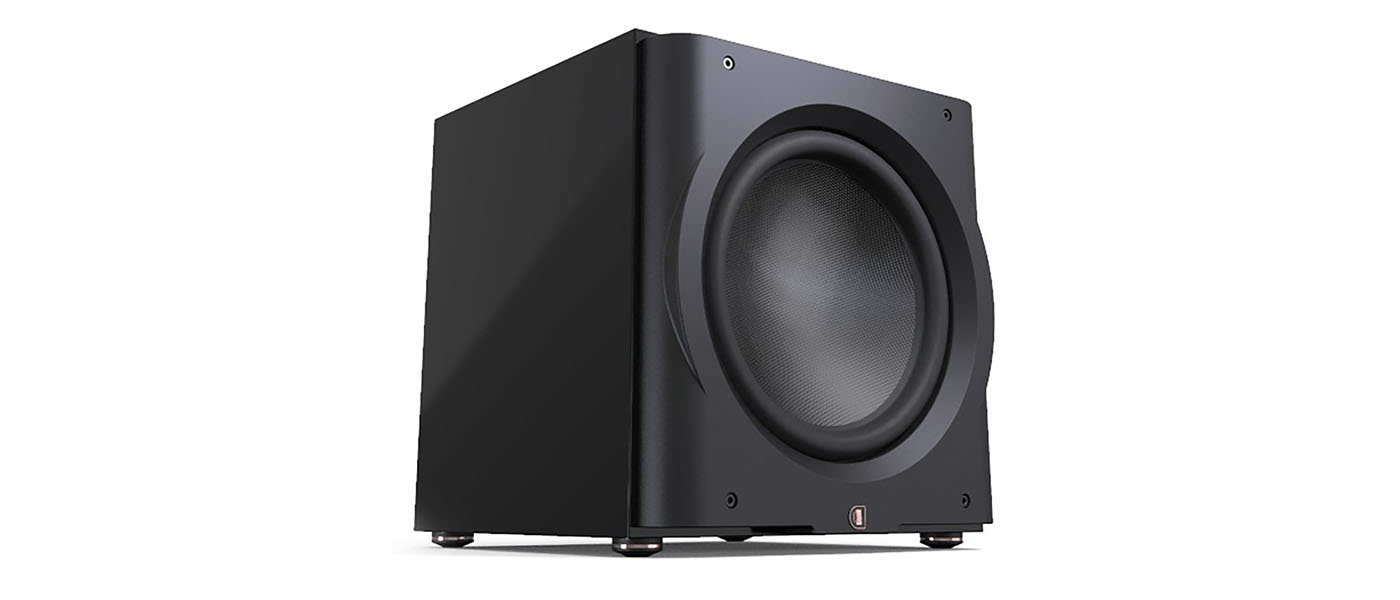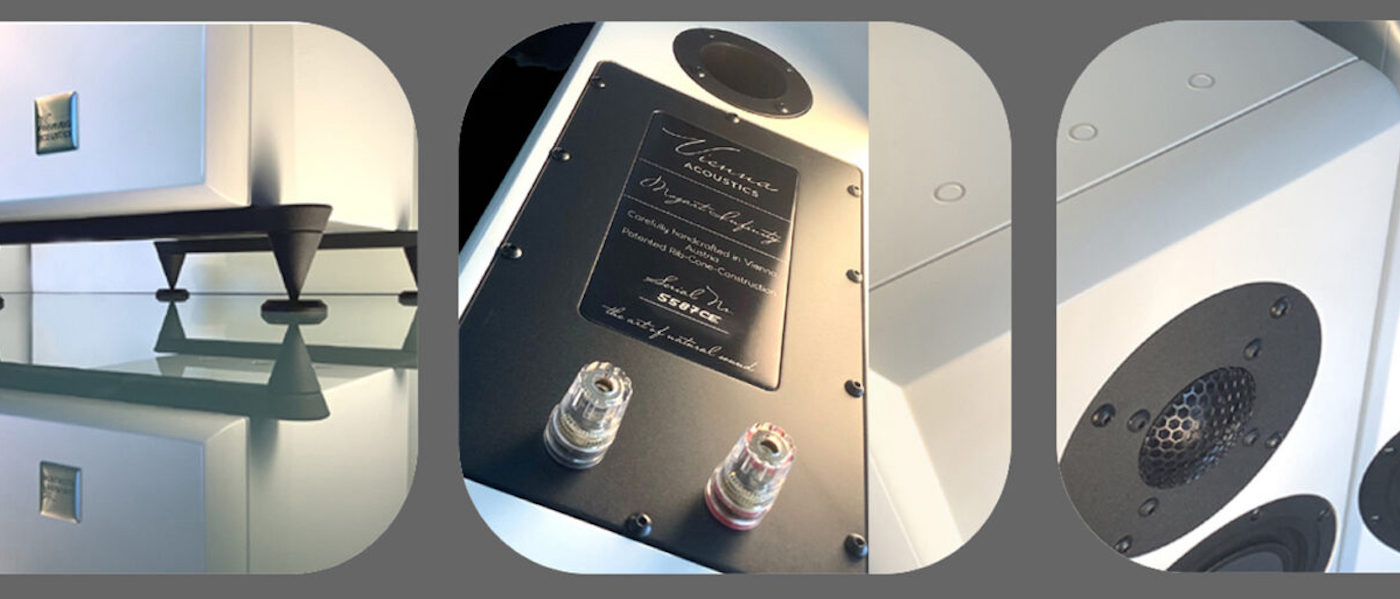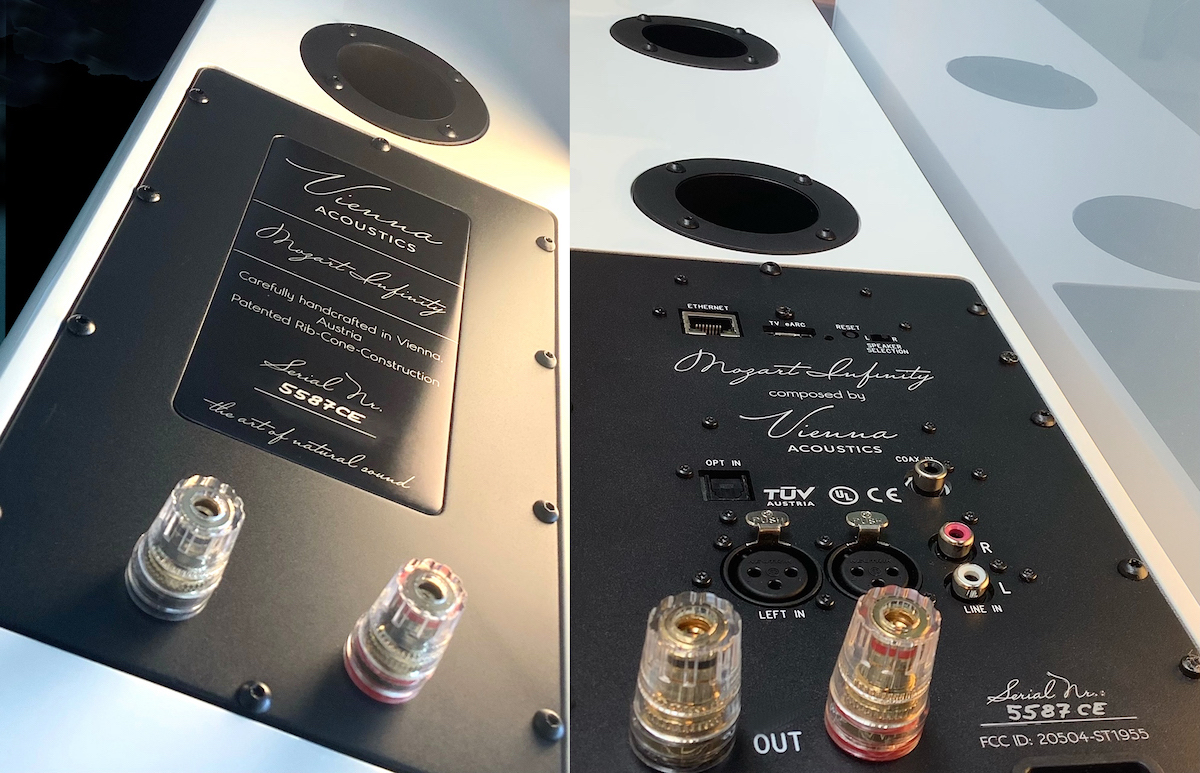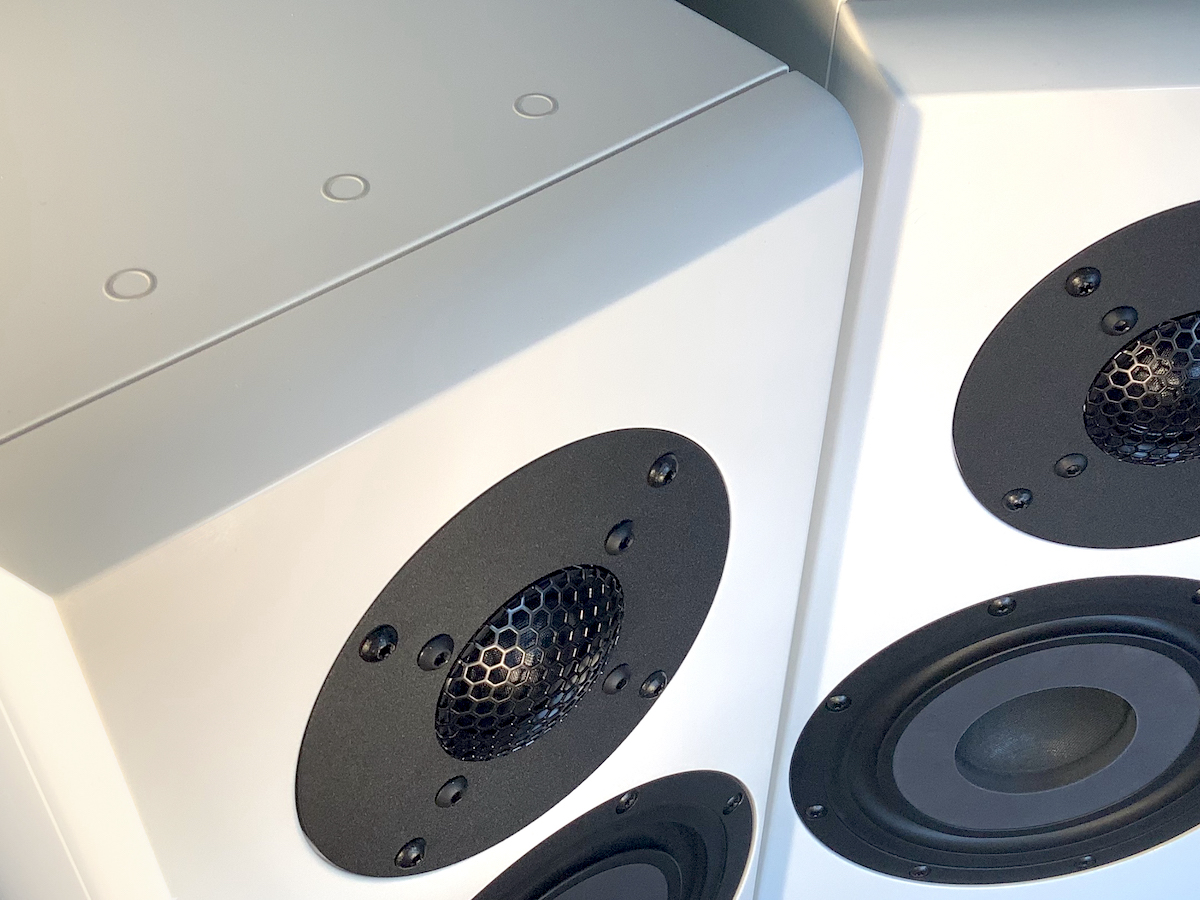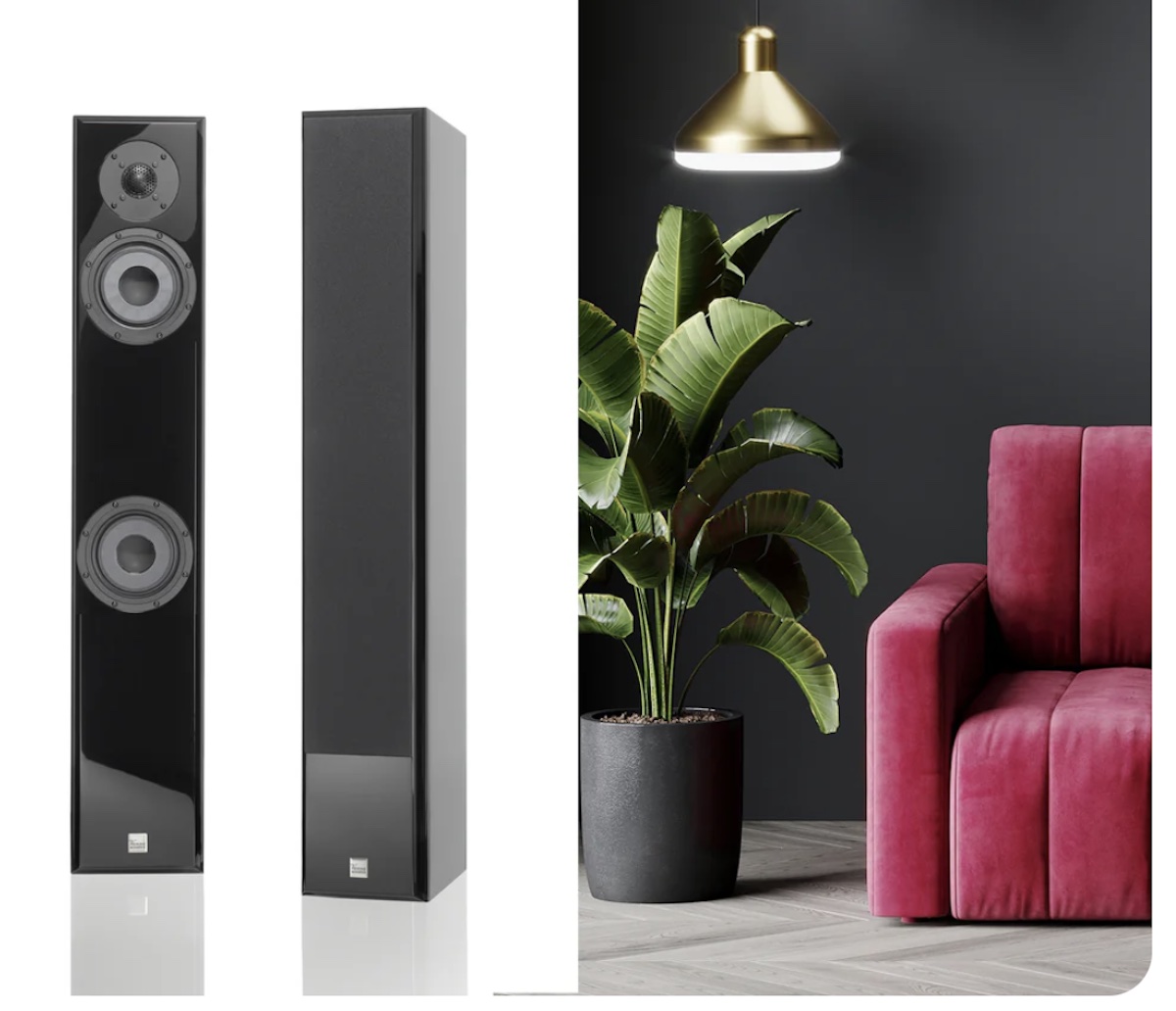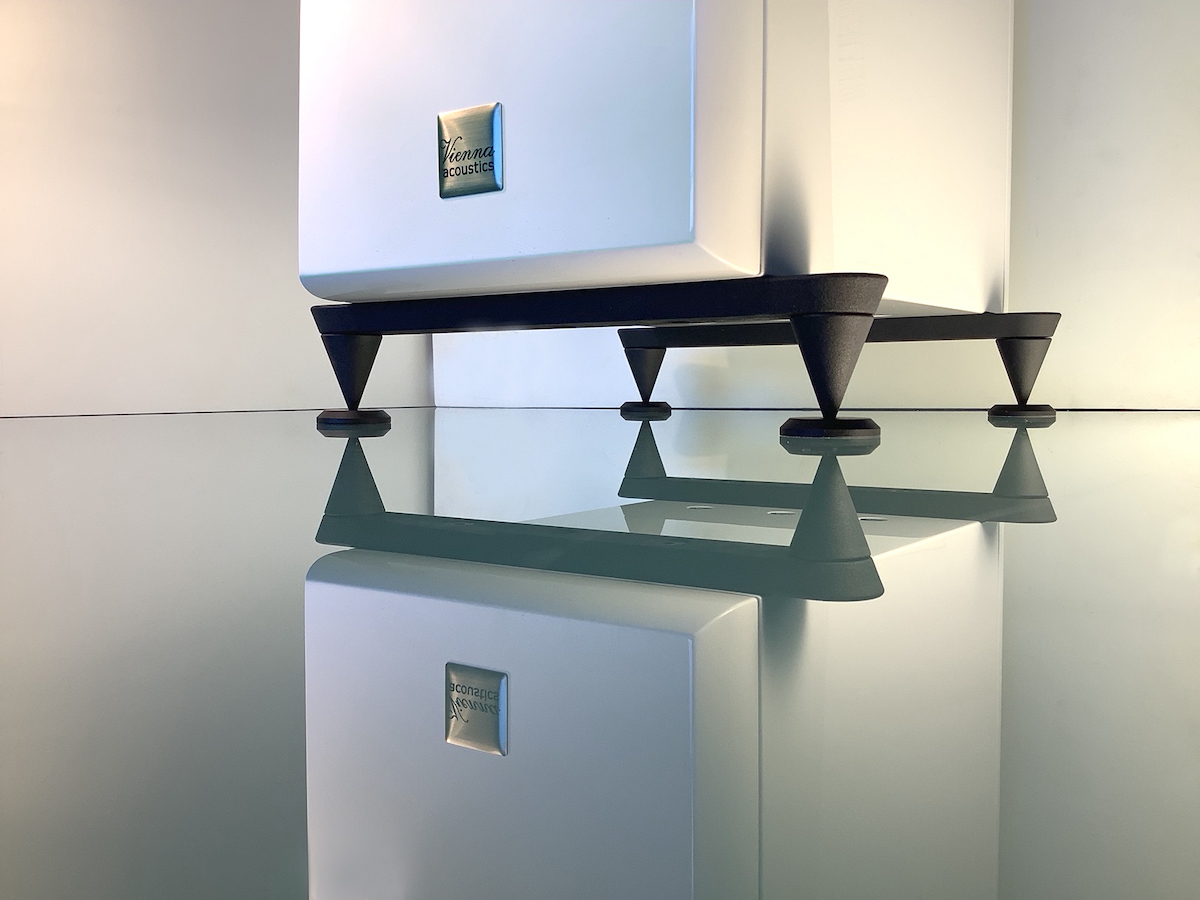I believe they have succeeded with their Mozart Infinity active speakers.
Vienna Acoustics’ Mozart Infinity active speakers are a complete and self-contained music system. You can stream audio to them, and you can use external sources such as a CD player or TV. And you can control them and choose music sources with a mobile application.
Vienna Acoustics Mozart Infinity Active Speakers
- A complete and self-contained music system.
- Gorgeous construction, fit, and finish.
- Amazing soundstaging and sound quality.
- Effortless and seemingly unlimited power from the internal amplifier.
- Easy to set up with an intuitive mobile application.
- Very good documentation was provided with the speakers.
The team at Vienna Acoustics worked for five years to find just the right combination of amplifier, DAC, and streamer to build an active floor-standing speaker system to meet their stringent sound and usability requirements. The results of that effort are the Mozart Infinity active speakers, which are essentially an all-in-one stereo system built into a pair of towers and controlled with an application on your mobile device. Like all Vienna Acoustics speakers, they are sleek, they are gorgeous, and they take full advantage of the company’s proven high-rigidity cabinet design and three drivers in a bass-reflex enclosure. The MSRP is $14,995 in Cherry, Piano Black, and Piano White finishes, and $16,995 in Premium Rosewood.
FREQUENCY RESPONSE:
30 Hz to 22 kHz
DRIVERS:
Tweeter: 1.1” hand-coated VA silk dome
Woofers (2): 6” composite cone: flat X4P Spidercone with recessed fabric center cone
BASS FUNCTION:
Impulse optimizing QB 3 (Quasi-Butterworth)
BASS SYSTEM:
Bass reflex
CROSSOVER SYSTEM:
2.5 way
CROSSOVER COMPONENTS:
MKP capacitor 1% tolerance
Coils 0.7% tolerance
Air coils, metal film resistors 1% inductance free
MAXIMUM POWER CONSUMPTION:
350W (typical listening levels require much lower, double-digit values)
STANDBY POWER CONSUMPTION:
<1.5W
POWER SUPPLY:
100 to 240V ~ 50/60Hz
PROCESSOR:
Quad-core ARM
CONNECTIVITY:
Ethernet
Wi-Fi (2.4GHz and 5GHz)
STREAMING SERVICES:
Airable radio index and podcasts
AirPlay 2
Roon Ready
Qobuz is available via Roon (and AirPlay 2/UPnP)
Spotify Connect
TIDAL Connect
UPnP/DLNA
PRIMARY SPEAKER INPUTS:
Analog inputs: RCA and balanced XLR
Digital inputs: Coax and TOSLINK
eARC HDMI
USER INTERFACE:
Android/iOS control application
Three buttons/capacitive sensors for volume up/down and power/standby on the top of the primary speaker.
Left/Right assignment via slider on the rear panel of the primary speaker. LED on the rear panel of the primary speaker.
DIGITAL-TO-ANALOG CONVERTER:
ESS ES903 8Q2M
AUDIO RESOLUTION AND SAMPLING RATES:
Coaxial input up to 192kHz/24-bit
HDMI input up to 192kHz/24-bit
Optical input up to 96kHz/24-bit
Streaming content up to 384kHz/24-bit
AMPLIFIER CONNECTIVITY AND FEATURES:
DIG IN OPTICAL > Digital input – TOSLINK DIG IN RCA > Digital input – Coax
ETHERNET > LAN connector
Left/Right Speaker Selection
LINE IN RCA > Analog input (RCA)
LINE IN XLR > Balanced analog input (XLR) TV > eARC / HDMI Reset Button
BREAK IN TIME:
30 to 100 hours
WEIGHT:
44lbs (20kg) each
DIMENSIONS (W x H x D):
8.5” x 38.25” 13.5” (216mm x 972mm x 343mm)
AVAILABLE FINISHES:
Cherry
Piano Black
Piano White
Premium Rosewood
MSRP (PAIR):
$14,995 in Cherry, Piano Black, and Piano White
$16,995 in Premium Rosewood
Company:
SECRETS Tags:
Vienna Acoustics, Mozart, Infinity, reviews 2025, speakers, stereo, streaming, woofer, tweeter, active, powered
Secrets Sponsor
The Mozart Infinity speakers are Vienna Acoustics’ entry into the world of streaming. And they are an all-European product, from streamer to amplifier, DAC, the handcrafted European cabinetry, and the Vienna Acoustics composite cone drivers with patented flat X4P Spidercone technology.
The Vienna Acoustics Mozart Infinity active speakers are essentially an entire stereo system incorporated into and hidden within a pair of mid-size floor-standing towers. Like countless other pairs of speakers, on the front you’ll see two mid/bass drivers and a tweeter, and on the back, you’ll see two ports. Both speakers stand on handsome brushed-aluminum brackets with a spike on each end. They stand at 39” tall, over 6” wide, and 12” deep.
But that’s about where the similarities with commonplace speakers end. On the rear of one speaker, there is only a single pair of very high-quality speaker cable binding posts. This is the passive speaker. And on the rear of the other speaker, next to the binding posts, is an array of inputs not usually found in the back of a speaker, and an IEC power port. This is the active speaker. This is also where the amplifier, DAC, and streaming computer are located.
On top of the active speaker are three buttons (Vienna Acoustics calls them “gentle silver-rings”). They are touch-sensitive and don’t require very much effort to activate. The left button is volume down, the middle button puts the speakers into standby mode, and the right button is volume up.
The Vienna Acoustics Mozart Infinity active speakers are available in four finishes: Cherry, Piano Black, Piano White, and Premium Rosewood. The pair I reviewed was Piano White, which is exactly the finish I’d choose were I buying a pair for myself. The care and quality that went into the construction of these sturdy speakers are readily evident. The handcrafted European cabinetry and piano lacquer finish are nothing short of gorgeous. In that regard, they definitely deliver on their price.
Mechanically, these are ported 2-1/2-way tower speakers, with one 6” composite cone midrange, one 6” composite cone mid-woofer, and a 1.1” hand-coated VA silk dome tweeter. The woofer materials are Vienna Acoustics’ own flat X4P Spidercone, and each woofer driver has a recessed fabric center cone. The speakers incorporate a bass-reflex design and QB3 Quasi Butterworth alignment.
A little below the mid-point of the rear of the speakers are two ports. The speakers utilize a two-and-a-half-way crossover that itself incorporates MKP capacitors with 1% tolerance, 1%- inductance-free metal-film resistors, 1% tolerance coils, and air coils.
The usual parameters one looks for in a pair of speakers, such as sensitivity and impedance, aren’t an issue because the speakers essentially drive themselves with custom-matched internal amplification. And, I realized, it’s very nice not to have to worry about those two things.
And that about covers the old-fashioned aspects of the Vienna Acoustics Mozart Infinity active speakers. Now on to the modern stuff: the lead active speaker has a computer built into it. That computer uses a quad-core ARM processor with Ethernet and Wi-Fi connectivity, broadcasting in both 2.4GHz and 5GHz frequencies. I am assuming that the computer is running some open-source operating system, such as Linux, but that really isn’t important, I believe. (But, like all operating systems, it occasionally needs updates, so you will occasionally have to use the Vienna Acoustics mobile application to upgrade your speakers. Now there’s a new sentence for me.)
It’s that built-in computer and operating system that enables the speakers to play music from quite a few streaming services: Airable radio index and podcasts, AirPlay 2, Roon, Spotify Connect, TIDAL Connect, and UPnP/DLNA. And you can play Qobuz via Roon or AirPlay 2/UPnP. Each byte of that streamed sound passes through the speakers’ DAC running on an ESS ES903Q2M chip. (A nice touch is that you get a free three-month trial of Roon with the speakers if you want to try it out before committing to a subscription.)
A word about Bluetooth: according to the manual, “…the Vienna Acoustics app is based on BT [Bluetooth] functionality, for most convenient operation. Mozart Infinity is solely delivering the highest sound performance via Wi-Fi and AirPlay 2.” So, you cannot stream audio to the speakers over Bluetooth.
The speakers do have Bluetooth connectivity, but only for certain remote controls, and only for basic commands, like volume up/down/mute, pause, previous/next, and standby. If you’re wondering if your particular third-party remote control will work with the speakers, you can contact Vienna Acoustics at [email protected] to find out.
Both speakers are amplified symmetrically from front to end by a 125W/channel Hypex Class D amplifier in the active speaker. But I honestly didn’t feel the need to know those details, because the speakers sounded amazing and operated without any problem whatsoever when they were in my system.
Vienna Acoustics also includes a 3.6-meter-long cable with banana plugs for you to connect the speakers to each other.
All of the input ports are on the rear of the active speaker. You get two analog inputs: unbalanced RCA and balanced XLR. And you get two digital inputs: Coax and optical Toslink. There is also an eARC HDMI input and an Ethernet input. And finally, there is an IEC power port to attach a power cord. There is also a Reset button and a toggle switch to configure the active speaker as the left or right one.
An ultra-simple setup would be a turntable with a built-in phono stage, like the Technics SL-1500C. For that, all you would need is a pair of RCA interconnects. Then you could do all of your digital listening via streaming or UPnP and control it with the mobile application. And that’s it, you now have an entire stereo system.
Hardware
In quite a few ways, this was an entirely new speaker setup situation for me. For example, I’ve spent a fair amount of time setting up speakers over the decades, but not once have I attached an Ethernet cable to one.
Also, setting up the Vienna Acoustics Mozart Infinity active speakers required some rethinking of my cable situation. Right now, all of my interconnects are 1-meter or shorter, because my components are so close to each other. So that meant that the 0.5-meter interconnect I use to connect my CD transport player to my preamplifier wasn’t long enough to reach the active Mozart Infinity speaker. I realized that I needed interconnects that are at least 2 meters long, and for some components, 3 meters, to attach a component to the speaker.
That said, the initial setup was quite easy. I decided that the active speaker worked best on the left side of my system, so I set the selector switch on the back of the active speaker to Left. I then connected an Ethernet cable from the router I use for my system. Then I connected the active and passive speakers together with the included loudspeaker cable, which is 145” (3.6 meters) long and terminated with banana plugs. And finally, I attached the included IEC power cable to my PI Audio UberBUSS power distribution unit, and the speakers (and the computer, and the DAC, and the streamer) automatically started up. And that’s it, you’re done with the initial physical setup.
A nice touch is that the speakers play a lovely short tune (that I thought of as “angelic”) when you power them on, and a different angelic tune when you power them down. You also get soft beep tones when you press the gentle silver rings on top of the active speaker.
Later, I wanted to attach external components to the active speaker. Fortunately, Playback Distribution, which sent me the speakers, also represents Esprit Cables, and they sent me 3-meter pairs of digital Coax and balanced XLR cables. I used the digital coax cable to connect my Cambridge Audio CXC CD transport.
In order to listen to vinyl records, I ran the Esprit XLR cable out of my Austin Audio Works Black Swan phono preamplifier into the back of the active speaker. The turntable was my Thorens TD-124 with a 9” Jelco tonearm and a Zu Denon DL-103R moving-coil cartridge.
At first, the sound quality was a bit muffled; I didn’t think I was getting as much detail as I could out of the Black Swan. I’d assume this was due to a less-than-optimal impedance match. Fortunately, you can adjust the trim for each of the speakers’ inputs with the mobile application. After a bit of trial and error, I got it all dialed in, and I was rocking away with a turntable and phono preamplifier attached directly to the back of a speaker. That was another first for me.
The Vienna Acoustics Mozart Infinity active speakers did an excellent job of communicating the musical integrity of whatever vinyl record I played through them. The bass output was tight and tuneful, and I heard quite deeply into the attack and decay of bass notes, frequently hearing the room the instrument was played in, if that was available on the recording. That quality contributed to the speakers’ stellar soundstaging capabilities; the speakers disappeared, and I could hear deeply into the back-to-front and side-to-side qualities of the recordings. All in all, it was quite engaging.
So, keep in mind that if you do buy a pair of Vienna Acoustics Mozart Infinity active speakers, you may need new, longer cables. However, depending on how your components are situated, you can decide on which side of the components to put the active speaker to accommodate your current cables (you just flip the toggle switch on the rear to Left or Right, and you’re good to go), or you can rearrange your components. Granted, you do not need to attach any external component to enjoy these speakers, but it’s worth mentioning.
The speakers’ sensitivity and impedance are not mentioned in the literature, but you can adjust them for individual inputs with the mobile application.
Software
The documentation provided by Vienna Acoustics is quite good at explaining how to set up the application and how to use it. I also found the mobile application’s interface to be quite intuitive; your mileage may vary, of course.
After you install the Vienna Acoustics application on your Android or iOS device and start it, it will automatically find the speakers on your local Wi-Fi network (you don’t need to create an account to do this, which is really nice), and then you can stream to them from several streaming services. The application includes a network wizard setup functionality; you can choose Automatic, Hybrid, Wired, or Wireless, and it’ll scan the local network to find Ethernet and/or Wi-Fi for you. And that’s it, you’re done with the software setup.
If you have an Ethernet connection nearby, you can set up the speakers in a hybrid network configuration so that they use both Ethernet and Wi-Fi simultaneously. That will enable you to stream music from NAS storage or UPnP software (like Plex) running on your local network through Ethernet, and also stream via AirPlay 2, Spotify Connect, and so on, through Wi-Fi.
The Vienna Acoustics application provides a wide variety of options to customize the sound output, such as left/right balance, bass, loudness, and treble settings. You can also personalize the sound output frequencies by manually adjusting several ranges of sound, from 60 Hz to 12,000 Hz, with individual graphic sliders for each frequency range. And, quite amazingly for a new product, you can set them to stereo or mono output.
And from the convenience of your portable device, you can control the volume and select any one of the five possible inputs for the speakers. I’ll admit that I really came to enjoy that capability; going back to my previous system configuration and having to actually get up off my sofa to press buttons and turn knobs to adjust volume and select inputs is going to take some re-adjustment.
I believe the pair of speakers I received were a demo pair, so they probably had over 100 hours of break-in time on them. I heard no changes in sound in the time I had them, and I heard no congestion or stiffness that would suggest that some break-in time would have helped. They sounded amazing from the get-go.
My main pair of speakers are the Polk Audio Legend L600s. Over the years, I have found ways to improve their sound, with upgraded feet, better cabling, and some acoustic treatments in my listening room. I quite enjoy the Polks; they are great with spatial detail and getting the impact of the music across with their prodigious bass output. But the Vienna Acoustics Mozart Infinity active speakers far exceeded the capabilities of the Polks in every possible parameter, which surprised me because, to begin with, the Vienna Acoustics speakers are about a third of the size of the Polks, and yet I got more and tighter bass and an even bigger soundstage. I was quite surprised and very impressed.

Kraftwerk, “Computer World,” Apple Music Streaming
After I had powered up the speakers and could find them on my Wi-Fi network, just for a basic functionality test, I opened Apple Music on my iPhone and queued up “It’s More Fun To Compute” because that song has some deep and scrunchy synthesizer tones I really enjoy. Then I hit Play and almost fell over. The music absolutely exploded out of these speakers in a way that completely surprised and mesmerized me. I literally laughed out loud at then said to myself, “Are you kidding me?”
The speakers completely disappeared, and I heard a massive soundstage; my entire room filled with electric and energetic music. Immediately, I recognized that the Vienna Acoustics Mozart Infinity active speakers had a sense of power and control that far, far belied their size. I heard a depth of low-level detail in the synthesizer tones and percussion I had no idea existed in Kraftwerk’s music; their music may appear to be very simple, but a lot of very serious thought went into its creation, and there is a lot of depth to it.
This was also the best-sounding streaming music I’ve ever heard in my system. I experienced no buffering or skips in the music, and I no longer really cared about bitrate or resolution. Whatever the streaming bitrate was (16/44, I assume) just didn’t matter. The music just sounded so good, I just sat down and enjoyed it, and continued listening to music late into the night.

Victoria Williams, “Happy Come Home,” vinyl LP, Geffen Records GHS24140, 1987
This is Williams’s debut LP, and it very well captures the down-home charm of her folky music and the lovely warble of her voice’s natural vibrato. The Vienna Acoustics Mozart Infinity active speakers portrayed every molecule of the energy and joy present in the performances, and I found myself quite engaged by just how effortlessly the music flowed off the vinyl and out of the speakers. A standout cut is Williams’s rousing rendition of the Reverend James Cleveland’s gospel classic “I’ll Do His Will,” and I felt the full force of the piano, backup singers, and spirit in my own living room.
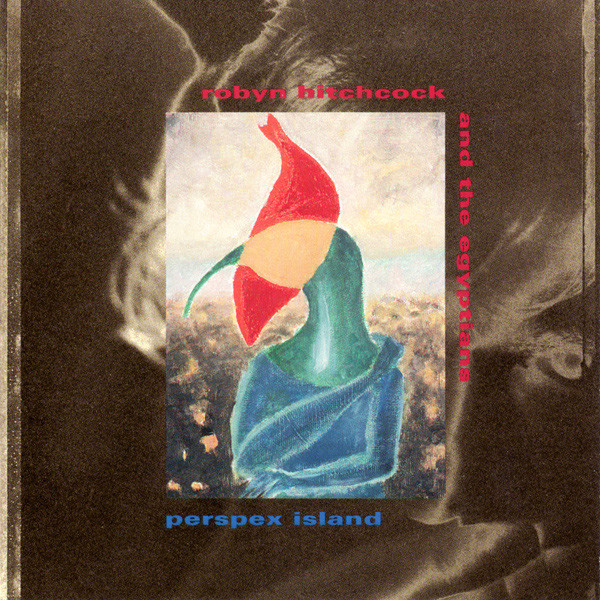
Robyn Hitchcock and the Egyptians, “Perspex Island,” CD, A&M Records 75021 5368 2, 1991
I took digital output from my Cambridge Audio CXC2 CD transport with the Esprit coax cable and attached it to the Vienna Acoustics Mozart Infinity active speaker’s digital input.
This is one of Hitchcock’s most polished and produced albums, but the speakers still managed to portray the energy and humor of the performances. I heard low-level details I’ve never heard before, like piano tracks that echo vocals and tambourines deep in the mix, which deepened my experience with the album, which I’ve been listening to since it was first released 34 years ago. The speakers’ built-in DAC presented a detailed and non-fatiguing sound that did not sacrifice organic warmth for chilly details. Without fail, the music I listened to through these speakers was engaging, fun, and good enough to make me want to keep listening.
Secrets Sponsor
$14,995 is a lot of money for a pair of speakers for a lot of people, but when you consider that they are essentially an entire self-contained music system, that price becomes less intimidating. There’s no need to buy an amplifier or preamplifier, or even external sources, if you don’t want to. You can just connect the two speakers, turn them on, and stream music from your mobile device, and you’re done. I admit that I really like the simplicity of that whole situation. I could honestly see myself selling off several of my components in order to fund the purchase of a pair of Vienna Acoustics Mozart Infinity active speakers; they really do sound that good, and I wouldn’t miss the interconnects and power cords I would no longer need. If you want easy setup and maintenance, simplicity, good looks, and even better sound, the Vienna Acoustics Mozart Infinity active speakers are an excellent deal. I could honestly see these being the last pair of speakers someone would ever need.
- Very big sound from a relatively small and light package.
- Satisfying amounts of bass energy; I never felt the need for subwoofers.
- Very attractive and well-constructed cabinets.
- Expect excellent sound quality for many years.
- A wide array of sound customization options on the application.
- Mono or stereo configurations are possible.
- Nothing
One could easily spend around $15,000 and several years of effort to build a complete stereo system. I know for certain that I have spent more than that. Or one could just buy a single pair of Vienna Acoustics Mozart Infinity active speakers. In one purchase, you can have a complete, very versatile, and very, very good-sounding stereo system.


